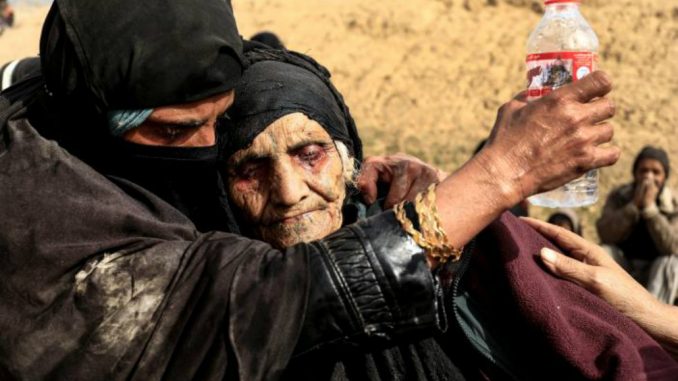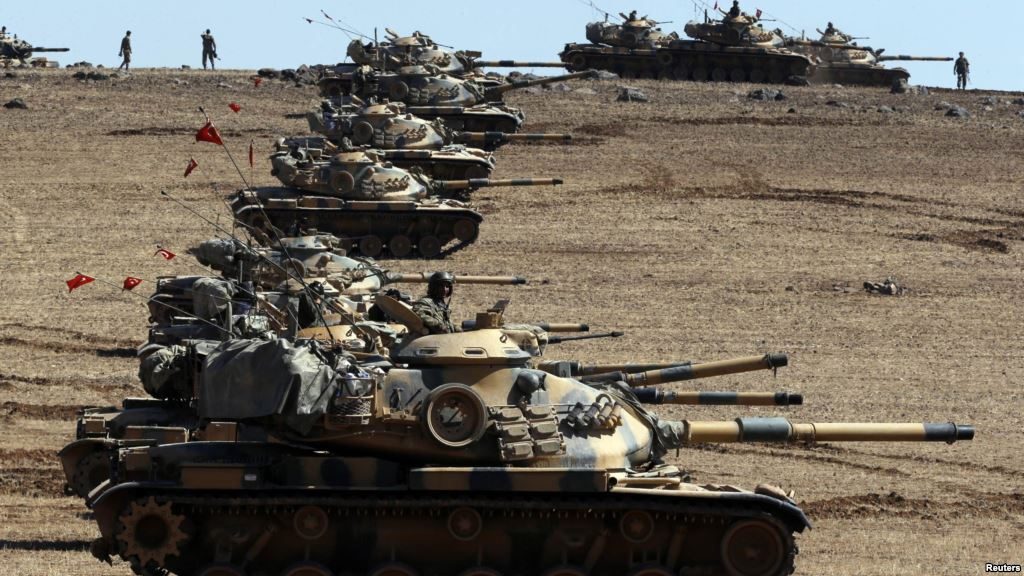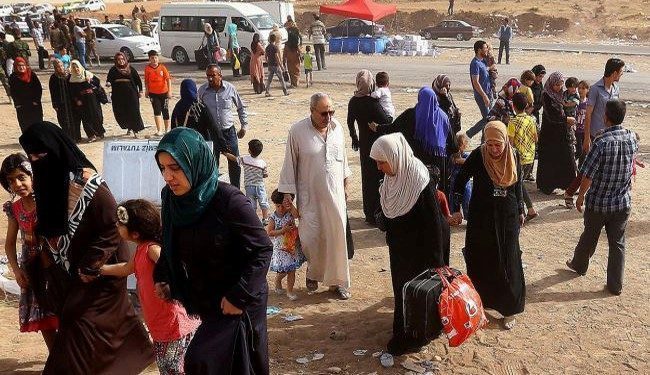
More than half of Iraq’s families—around 20 million people—are at risk of food insecurity and cannot withstand any further shocks such as conflict or increases in basic food prices, warned a joint report by the UN’s World Food Programme (WFP) and the Iraqi government.
At the height of its power two years ago, Islamic State ruled over millions of people in territory running from northern Syria through towns and villages along the Tigris and Euphrates river valleys to the outskirts of Baghdad in Iraq.
However, ISIS’s territory is shrinking rapidly since last year as the US-led coalition, the Turkish-backed forces, and the Russian-backed Assad regime forces have fierce fights against its forces in both Syria and Iraq.
The United States is providing air and ground support to Iraqi and Kurdish forces trying to dislodge the hardline group from Mosul.
Iraqi forces captured the eastern side of Mosul in January after 100 days of fighting and launched their attack on the districts that lie west of the Tigris river on Feb. 19.
This battle had a grave effect on the civilians in Mosul, as more than 320,000 civilians have been displaced since the military operations started, and were accommodated in refugee camps that are crumbling by the newcomers and lack the basic living conditions.
The intervention of ISIS left the country in a mess, as hundreds of thousands lost their jobs and were forced to flee their homes while the agriculture and industry had agonizing strikes, leaving the economy in a hard situation and putting more people under the poverty line.
However, the situation in Iraq was already in a mess when ISIS came to the picture. The US invasion in 2003 led to the collapse of the previous regime taking the strong economy with it and putting the country in a civil war for power, in which the civilians were the only victims.
Starvation threat
The WFP study, carried out in December, before the recent offensive on west Mosul that started February 18, was based on surveys of 20,000 families in urban and rural areas across the country. Since then, the scale of the crisis has intensified as people flee the conflict.
The report notes that even before the assault on Mosul, around 2.5 percent of Iraqis were “food insecure.” That is, more than 800,000 people were going to bed hungry every night.
More than 3 million people have been displaced from their homes since 2014 when Islamic State in Iraq and Syria (ISIS) took over one-third of the country. The report estimates that two-thirds of the internally displaced, some 2 million people, and more than half of Iraqis living in their own homes have barely enough food to feed themselves. The situation is so bad that almost 75 percent of children under the age of 15 are working to help their families put food on the table instead of going to school.
The survey, the most comprehensive ever carried out in Iraq, found that 53 percent of residents and 66 percent of internally displaced people are vulnerable to food insecurity. Food insecurity was twice as high among internally displaced families, compared to those still living in their own homes.
The highest concentration of food-insecure families was found in the long-neglected Muthanna governorate in southwest Iraq, on the border with Saudi Arabia. Other high concentrations were in parts of the largely Sunni governorate of Salah al-Deen, whose capital Tikrit was Saddam Hussein’s hometown and support base.
The WFP currently provides monthly food assistance to 1.5 million of the most vulnerable displaced people in Iraq’s 18 governorates, through a system of cash hand-outs and monthly family rations. In January, it was forced to halve the food rations because donors had failed to deliver on their pledges. The WFP warned that even these are now at risk, as it needs to raise $113 million to cover costs until the end of September 2017.
Displaced by Mosul battle
Even the devastating figures compiled by the WFP pale into insignificance when one considers the impact of the vast numbers displaced by the attempt to retake Mosul from ISIS, in one of the largest urban military operations since World War II.
By the end of January—in a city once home to 1.8 million people—at least 160,000 out of 400,000 people living in eastern Mosul had fled their homes after the military campaign to take the eastern part of the city began.
The assault by Iraqi forces, under cover of air strikes by US-led forces, led to a huge number of civilian casualties. They comprised nearly half of all casualties, far higher than the 15-20 percent expected in such a conflict. This was despite a promise by the Iraqi security forces to adopt a plan prohibiting artillery strikes, requiring civilians to remain in their homes, and providing humanitarian exit corridors wherever necessary.
The situation has hardly improved in the months since the recapture of eastern Mosul. While booby-traps are being removed and some people have returned to their homes, water, electricity, and food are in short supply. Schools remained closed for two months because of delays in paying teachers.
Lise Grande, the UN humanitarian co-ordinator in Iraq, told the website Middle East Eye, “ Worryingly, large numbers of people are actually leaving eastern Mosul. People tell us that they are leaving because not enough food is being distributed and because they are being harassed—some even feel threatened.”
Moreover, at least 355,000 Iraqis are believed to have fled the battle to retake the western part of the city, which began in February, with 15,000 fleeing every day. Grande said, “Hundreds of thousands more may [flee] in the days and weeks ahead.”
Those internally displaced face dire conditions in squalid camps, sometimes with three or four families crammed into one 10-by-4-metre tent, where they wait in massive queues to get a helping of rice and sauce.
UN Secretary-General Antonio Guterres recently issued an urgent call for the major powers to increase aid to help people fleeing the city. He said, during a visit to Hassan Sham camp, one of a number of camps for displaced people, “We don’t have the resources necessary to support these people,” adding, “Unfortunately our programme is only 8 percent funded.”
While Iraqi forces have recaptured parts of the city, at least 400,000 people remain trapped inside the densely populated Old City, the scene of weeks of street battles. While many of the ISIS leaders are thought to have left Mosul, the US believes around 2,000 fighters are still in the city, resisting Iraqi ground forces with snipers, car bombs and suicide attacks.
The UN humanitarian coordinator said, “The level of damage in western Mosul is already far greater than in the east, even before the battle to retake the Old City begins” [emphasis added]. Homes have been destroyed, schools and health centers damaged and crucial public infrastructures including electricity and water stations lie in ruins.
The end of the battle for Mosul will also leave Iraq struggling with thorny political issues including control of recaptured territory in the north that is claimed by both the country’s autonomous Kurdish region and its federal government.
And Iraq will still be contending with the effects of the war — citizens killed, wounded or missing, hundreds of thousands displaced, houses, shops, and infrastructure wrecked, children years behind in school — for years to come.



